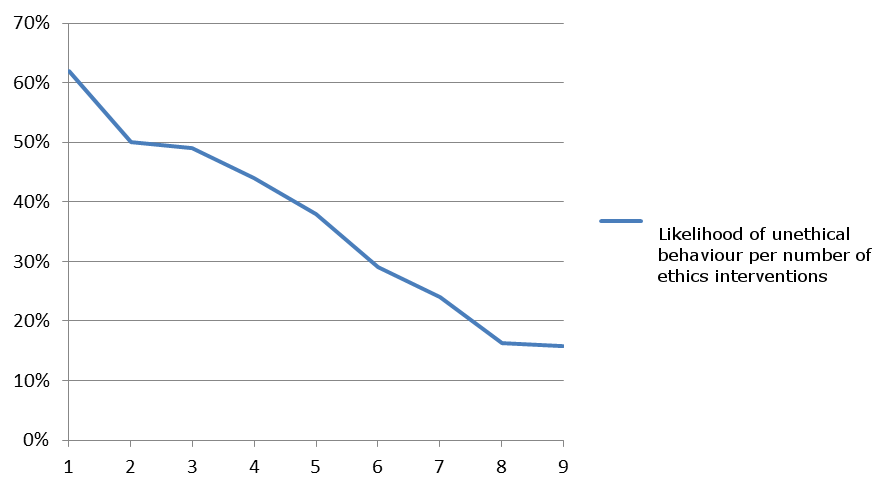Whatever level of involvement one has in ongoing developments in the ethics of European research and innovation (R&I), a striking feature of the field that one has to deal with is its diversity in terms of concepts and approaches.
Rasmus Øjvind Nielsen and Lise Bitsch, The Danish Board of Technology Foundation
For a newcomer to the field, it may seem that research ethics, research integrity, responsible research and innovation (RRI), bioethics, ethics of technology, ethics review, ethical impact assessment, all in some way deal with the same issues, albeit not in the same manners. On top of that, broader developments in corporate social responsibility (CSR), sustainability governance, and human rights, also, in many ways, overlap with attempts to handle ethical concerns, and the newcomer would be forgiven for feeling a bit confused.
For the experienced ethics professional, this plethora of concepts swirling around the field is a natural state of affairs that one learns to navigate over the years. Some professionals are more enamored by one concept than another. Different authorities (regional, national or local) demand hard or soft compliance with different sets of rules or norms. Navigating the tangled web of ethical concepts, practices and how different actors take them up simply becomes part of the cost of doing business.
For the expert, there are rational reasons and identifiable boundaries between one concept and another, just as there are relatively clear lines between areas of expertise in one concept or the other. Some of these boundaries make perfect sense once explained. The history of excesses in medical research in the first half of the 20th century explains why in the second half, a core concern became express consent to participation in medical experiments. Likewise, late lessons from early warnings, which technologists and industrialists chose to ignore, have taught us to look for uncertainties and the unforeseen in the ethics of technology. However, why both fields have not automatically adopted the hard won lessons of one another is more difficult to explain. Nevertheless, through socialization experts learn to navigate these boundaries with great respect for the expertise of one another and to leave the question of how it all fits together alone.
But that begs the question: how does it all fit together? Is there a greater meaning to the many different traditions and projects dealing with different aspects of ethics in various areas of research and innovation? This question can be approached in at least one of two ways. Either, what we are looking for is an overarching rationale – a system – into which each of the different approaches to ethics in R&I fits – or ought to fit – like the cogs and wheels of a clock. Or, what we look for is a way for historically contingent approaches to highly diverse problems areas to work together in adaptive and complementary fashion. Let’s skip the suspense; SATORI takes the latter approach.
With reference to, for example, the work of Muel Kaptein in mapping the contributions that different approaches to the question of ethics in an organizatione, we believe that ethics assessment – which is SATORI’s focus point – should be seen as one contributing factor among many to what might become a culture of ethics in European R&I. A summary of the main findings of Kaptein makes this point with all necessary clarity. This summary is out outtake from our deliverable D5.1 (forthcoming).
The first of Kaptein’s findings is that there are five ethics interventions that are significantly related to lowering of unethical behavior. In order of significance, these are:
- Code of ethics
- Training and communication
- Monitoring and auditing
- Accountability policies
- Investigation and corrective policies
The second finding is that the effectiveness of ethics interventions accumulates as more interventions are put in place in parallel. From a 65% likelihood of observed unethical behavior within the last 12 months, the study shows that this likelihood drops significantly with the number of interventions put in place in the organisation. With nine ethics interventions (the maximum number investigated in the article) the likelihood of observed unethical behavior drops to 15.87%. The diagram below illustrates the relation between the number of ethics interventions and their accumulated effectiveness.

Table: Likelihood of unethical behavior per number of ethics interventions. Source: Kaptein M. The effectiveness of ethics programs: The role of scope, composition, and sequence. Journal of Business Ethics. 2015 Dec 1;132(2):415-31.Illustration produced by SATORI based on Kaptein’s data.
Together, these findings indicate that while the many different approaches that exist to the question of ethics in R&I may be confusing, costly and create seemingly robust boundaries within the field, there is every reason to pursue a collaborative strategy for making all of these approaches work together to support a culture of ethics in European R&I.
